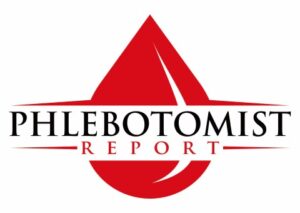Sometimes as a phlebotomist you will get to leave the lab and go to a patient home to draw their blood. Whenever I get the opportunity I am so excited to do it. I mean, I enjoy going on the field, you know just to get out a little and breathe some fresh air and see outside and talk to people. It’s a lot of fun.
If you are lucky, you may even get some treats sometimes. Like the lady giving you some cookies for your excellent service. And sometimes you even get a little bit of history and other cool information.
Have you ever done mobile phlebotomy? If you haven’t, let me share with you some of the equipment you will need when you go out there to perform a venipuncture.
Equipment Needed for a Mobile Phlebotomist
I am going to list the equipment you will need when you leave the lab to go to a patient’s home to draw blood and then following I will list some other equipment that could be useful if you are able to bring them along.
1. Phlebotomy Kit
You are going to need a phlebotomy tray that can house the following equipment.
- Tourniquets: They are essential for constricting blood flow to locate veins.
- Alcohol Swabs: They are used to sterilize the draw site to prevent infection.
- Needles: Various sizes of needles, including 21, 22, 23 gauges, and butterfly and syringe needles for difficult veins.
- Vacutainer Holders and Tubes: For collecting and storing blood samples.
- Gauze and Bandages: To apply after the blood draw to stop bleeding and protect the site.
2. Sharps Container
A sharps container is needed for used needles and other sharp objects. As soon as you are done drawing blood, dispose of needles in the sharps container. You don’t want used needles lying around. A container is needed for safety and compliance with health regulations. A sharps container ensures that all used needles are safely stored until they can be disposed of in accordance with medical waste guidelines.
3. Personal Protective Equipment (PPE)
Protecting yourself and your patient is important. Be sure to wear the following at all times.
- Gloves: Disposable gloves to maintain hygiene and prevent contamination. It will also protect you from soiled equipment.
- Face Masks and Shields: To protect against potential exposure to bloodborne pathogens.
- Lab Coats: Professional attire that also protects personal clothing. Protects you from getting your personal clothes contaminated.
4. Labeling and Documentation Supplies
Accurate labeling and documentation are needed to avoid mix-ups and ensure that each sample is correctly identified. This includes:
- Labels: Pre-printed or blank labels for each sample tube.
- Markers and Pens: For writing on labels and documentation forms.
- Patient Consent Forms: Necessary for obtaining permission to draw blood and transport samples.
5. Cooler with Ice Packs
It is important to maintain the correct temperature for blood samples during transport as this is crucial to preserve their quality and integrity. This will help with providing accurate and reliable results and the correct treatment for patients.
A cooler with ice packs provides a controlled environment to keep samples at the appropriate temperature until they reach the lab. Samples can only stay at room temperature for a certain amount of time. Outside a controlled environment the temperature can rise affecting the quality of samples.
Other Equipment that Can be Useful
6. Portable Centrifuge
If you are able to bring a centrifuge it can come in handy. Having a centrifuge means you won’t have to go back and forth to the lab when you have several draws to perform, since the samples can be processed in the field and maintain their integrity for a longer period of time.
7. Portable Phlebotomy Chair
If you have a phlebotomy chair and the patient wants to use it you can make it available. Sometimes the furniture at the patient home may not be the best at providing comfort and stability when drawing blood. So, if you have one it can help.
Phlebotomy chairs are generally designed to be lightweight and foldable, making them easy to transport and set up. Note that you will not always be able to use a phlebotomy chair. Some patients may be bed ridden or may have difficulty moving so you will have to draw their blood from where they are.
What is the convenience of mobile phlebotomy?
With mobile phlebotomy, you can have your blood drawn in the comfort of your home, office or wherever you may be. That saves you the time and hassle that come with going to a hospital or clinic, taking away the wait times and stress.
